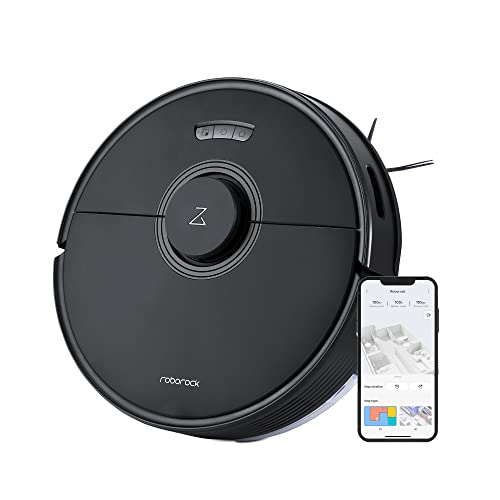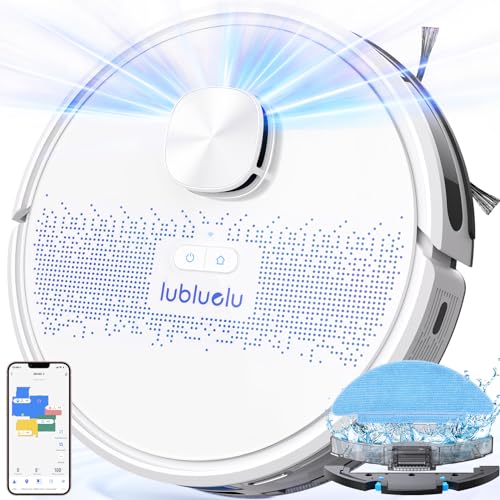Why The Robot Vacuum With Lidar Is Beneficial When COVID-19 Is In Sess…
페이지 정보

본문
 The Benefits of a Robot Vacuum With Lidar
The Benefits of a Robot Vacuum With LidarLidar is a remote-sensing technology that uses laser beams to measure their return time and create precise distance measurements. This allows the robot to better understand LiDAR Robot Navigation its surroundings and avoid hitting obstacles particularly in the dark.
 It is a vital technology for smart vacuums. It assists in preventing injuries from hitting furniture or navigating around wires that could get caught in the nozzle. lidar mapping robot vacuum offers a more sophisticated navigation system and also allows for features such as no-go zones.
It is a vital technology for smart vacuums. It assists in preventing injuries from hitting furniture or navigating around wires that could get caught in the nozzle. lidar mapping robot vacuum offers a more sophisticated navigation system and also allows for features such as no-go zones.Accuracy and Precision
If you're looking for a machine that can truly navigate your home with minimal effort you should look for one with mapping capability. These high-tech vacs form precise maps of your space, helping them to plan the best route to ensure an effective clean. The map is typically available as an app on your smartphone. It can be used to designate no-go zones or to select a specific area to clean.
Lidar is an important part of the mapping system that is used in many robotic vacuums. The sensor emits the laser pulse, which bounces off furniture and walls and the time it takes the pulse to return will give a precise distance measurement. This allows the robot detect and navigate through obstacles in real time, giving the machine greater insight into its environment than a camera can.
Camera-based navigation isn't able to distinguish objects if they're of the same color or texture or if they're located behind transparent or reflective surfaces. Lidar technology is not affected by these issues and can work effectively in virtually any lighting condition.
Most robots also include several other sensors that aid in navigation. The vac is protected by cliff sensors which prevent it from falling down the stairs. Bump sensors are activated whenever the robot comes into contact with something. This prevents damage because the robot will not accidentally knock over things.
Obstacle sensors are a further essential feature. They can stop the vacuum from causing damage to furniture and robot vacuum With lidar and camera walls. They could be a combination of infrared and sonar-based technologies. For example, the Dreame F9 incorporates 14 infrared-based sensors as well as 8 sonar-based.
The most effective robots make use of a combination of SLAM and lidar to create a full 3D map of the surrounding, providing more accurate navigation. This reduces bumping into walls and furniture, avoiding damage to sofa legs and skirting boards and ensuring that every corner of your home is clean. It also allows the vacuum to easily cling to edges and move around corners and corners, making it more effective than older models that moved from one end of the room to the other.
Real-Time Obstacle Detection
A robot vacuum with lidar technology can create a map of its surroundings in real-time. This allows it to navigate more precisely and avoid obstacles in its path. The lidar sensor makes use lasers to measure the distance between the vacuum and objects surrounding it. It can also determine the dimensions and shapes of the objects to plan a more efficient cleaning route. A robot with this technology can see in the dark and even work under your furniture.
Many of the top robot vacuums with lidars have a feature called"no-go zone. "no-go zone" that allows you to mark areas that the robot cannot access. This is useful when your home is populated by children, pets or items that the robot could harm. The app lets you create virtual walls that restrict the robot's access to specific areas.
LiDAR is more precise than other navigation systems, such as gyroscopes and cameras. It can identify and detect objects up to millimeters. The cleaner the robot vacuum is, the more precise its navigation capabilities are.
Some budget-friendly models offer basic obstacle detection with bump sensors to prevent the robot from hitting furniture or walls. These sensors aren't as efficient as the high-end laser navigation systems included in more expensive robotic vacuums. However, if you've got an uncluttered home and do not mind scuff marks on your paint or scratches on your chair legs, then spending money on highly efficient navigation may not be worth it.
Binocular or monocular navigation is also available. They use one or two cameras to look at an area and know what it's seeing. They can determine the common obstacles, like shoes and cables, so that the robot won't run into them during cleaning. However, this kind of technology isn't always working well in dim lighting or with small objects that have similar to their surroundings.
Some advanced robots also use 3D Time of Flight (ToF) sensors to look at their surroundings and create a map. The sensors measure the time it takes to get light pulses. This information is used to calculate the height, depth and position of obstacles around. This method isn't as accurate as other options, and can have problems with objects that are close to one the other or reflecting light.
Reduced Collision Risks
Most robot vacuums utilize a variety sensors to detect obstacles. Most robot vacuums employ gyroscopes to avoid bumping into objects. Advanced systems, like SLAM and Lidar utilize lasers to map out the space to determine their position. These mapping technologies provide a more accurate way to steer a robot and are required in case you don't want it to run into walls, furniture or other valuable items. They also help keep out dust bunnies, pet hair and other messes that get caught in corners and between cushions.
But, even with the most sophisticated navigation systems in place all robots will run into things from time to time, and there's nothing worse than finding a scuff mark on your paint or some scratches on your furniture after having let your cleaning machine loose at home. Virtually all robots have obstacle detection systems that keep them from hitting walls and furniture.
The wall sensors are helpful, as they allow the robot to identify edges like stairs and ledges, so that it won't fall or ping off. This keeps the robot secure and ensures that it will clean up to the wall's edges without causing damage to furniture or the vacuum's side brushes.
Other sensors can also be extremely helpful in detecting small and hard objects that could damage the internal components of the vacuum or cause costly damage to flooring, such as screws or nails made of steel. These can be a huge issue for anyone with an automated cleaner and are a major issue for households with pets and children, as the small wheels and brushes of these machines often get stuck on or caught in these types of objects.
Most robots are equipped with drop detectors that help them avoid getting stuck on a a threshold, or worse, damaging themselves. In addition increasing numbers of robotic vacuums are now also making use of ToF (Time of Flight) and 3D-structured light sensors to provide an additional level of navigational accuracy. This makes it less likely that the robots will overlook the nooks, crevices and corners that otherwise would be out-of-reach.
A Better User Experience
A robot vacuum that has lidar will keep your floors clean even when you're away. You can set up routines and schedules to have it sweep, vacuum or mop when you're at work or on vacation, or even out of the house for a short period of time. This will ensure that you'll have a clean and tidy floor when you get back.
The majority of the models we've reviewed in this guide utilize sensors and AI image recognition to show your home in 3D. The vac then navigates more efficiently by identifying obstacles, such as furniture toys, furniture, and other objects. The maps generated can be used to create "no-go zones" to tell the vacuum to avoid certain areas of your house.
The sensor in a robot vacuum that is equipped with lidar emits a series of laser light to determine distances between objects within the room. This allows it to detect walls and other obstacles unlike mapping systems based on cameras that are confused by reflective or transparent surfaces. It also enables the vac to better detect and work around obstacles in low-light conditions, which is where cameras can struggle.
Most robots equipped with lidar have drop detectors that prevent them from falling over obstacles or down steps. This feature is useful if you have a multi-level home and don't wish to have the vacuum snared between floors.
The majority of models with lidars are programmable to return the charging dock when they run out of juice. This is a great feature to have when you're away for a long period of time and don't want your vacuum to run out of power before it's done with the task.
One thing to keep in mind is that some vacs with lidar aren't as effective in detecting small objects like wires and cables. This can cause problems because they can get caught up and become entangled in the vac's brush or cause it to hit other obstacles that it might not have seen otherwise. If you're concerned about this, you should consider buying one that incorporates other navigational technologies like gyroscopes instead.
- 이전글Five Things You're Not Sure About About Borneoslot Link Alternatif 24.03.08
- 다음글15 Things You're Not Sure Of About Window Repair Near 24.03.08
댓글목록
등록된 댓글이 없습니다.